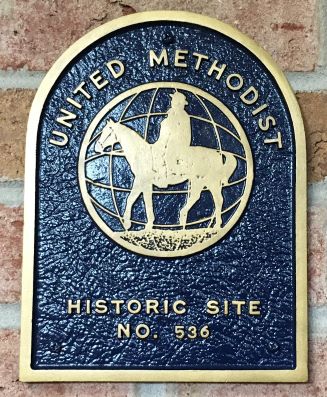
In 1986, the UMES Centennial steering committee advanced the idea of using a time capsule to commemorate a milestone year in the life of the institution.
Elizabeth Doane-Clark, a staff member and alumna; Herman Franklin, vice president for student affairs; Mortimer Neufville, vice president for academic affairs; Abraham Spinak, a faculty member; Willie Baker, the National Alumni Association president; and Valerie Watts are listed as committee members on a plaque marking the capsule’s location. The name of the late William P. Hytche, the university’s chancellor at the time, is on the marker as well.
Participants in the decision to bury a time capsule also remember Jessie Cottman Smith, the Frederick Douglass librarian, being involved.
Earlier in his professional life, Spinak participated in the burial of a time capsule and knew what was required to protect the contents from disintegrating over time. Consequently, he provided the leadership for that portion of the project.
When asked why the capsule is to be exhumed on the university’s bicentennial, Neufville said it was decided it was an appropriate way to reflect back and honor its 100th anniversary.
Capsule contents reportedly include: all programs and memorabilia from the 1986 centennial celebration, a list of administrative officers at the time, a college catalogue, institutional structure, academic offerings, size and qualifications of faculty, pictures of the campus and a description of the student body.
The items were viewed at the time as important and significant, and told the campus story in 1986. In hindsight, Neufville, who returned to campus in August 2011 to serve as its interim president, said he wished the capsule had also included a picture of one of the earliest graduating classes and a picture of the 100th class.

It also may have been instructive, Franklin noted to have included items that would give those who will open the capsule on Sept. 13, 2086 some feel for what the political and relationship climates were like at that time in the university’s history; the town-gown interaction; the perception state officials and others had of the value of continuing to support and finance the institution; and perhaps something to indicate the struggles faced by the institution during its first 100 years.
Franklin said he believed such items might give those in 2086 a greater appreciation for what they inherited.
The centennial time capsule was buried Feb. 19, 1988 in front of John T. Williams Hall. The marker reads, in part, “Something Extraordinary Happened Here.”
On Founders’ Day 2017, the Peninsula-Delaware Conference of the United Methodist Church presented the university with a commemorative plaque designating the institution a “United Methodist historic site.” The plaque is displayed in the lobby of Williams hall, not far from the time capsule marker.

